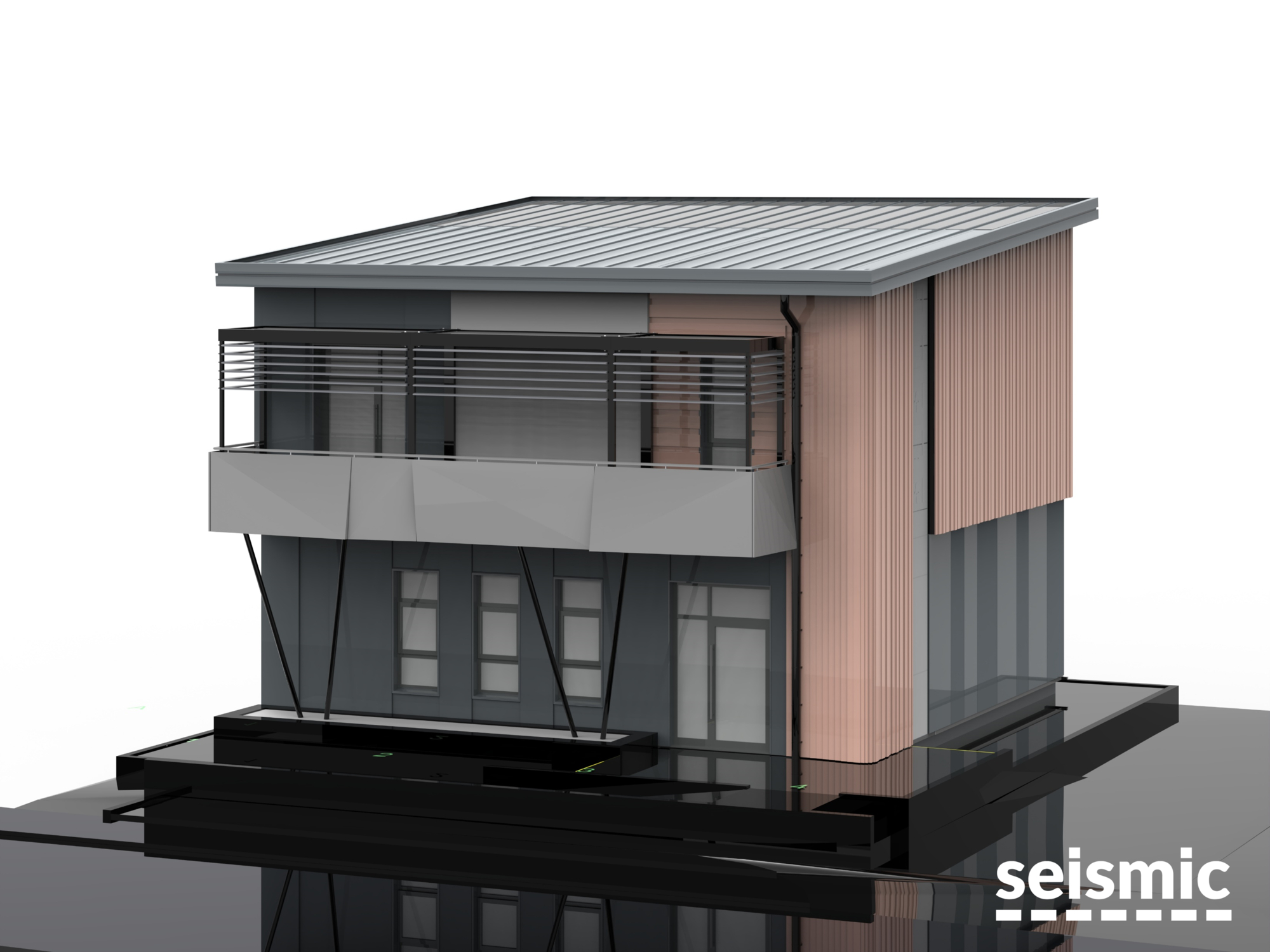
Global ventilation manufacturer Nuaire has unveilled its collaboration with the team behind Seismic – a four-year project developed by a consortium of Modern Methods of Construction (MMC) experts poised to bring about a new era of standardised, platform-based modern construction and building design.
The Seismic demonstrator is based on a standardised steel frame and set of components, to offer a flexible, highly configurable system suitable for a range of building types.
It has been created to drive a shift towards MMC – designed in line with the Government’s Construction 2025 targets and exceeding them in every way, delivering a building that is 75% faster to complete, 70% lower in carbon impact and 47% better value than traditional construction. With the UK government pushing for platform-based construction solutions, the new demonstrator building offers a glimpse of the future.
As part of the build, Nuaire provided products from both its residential and commercial range of heat recovery systems to efficiently ventilate the different spaces being showcased – providing clean, filtered air to ensure ongoing protection for occupants within the rooms.
Stuart Smith, group sales director at Nuaire, said: “Seismic is a dramatic development in the construction industry and one which no doubt will have major impacts on the HVAC industry also. We are really excited to be a part of it.
“With this move into MMC, offsite builds would mean quicker and easier installation, timely stock delivery and opportunities for testing. It mitigates risk and allows for increased flexibility.
“The shift could also herald a greater focus on indoor air quality – currently a no man’s land within building regulations with complete lack of emphasis on ventilation effectiveness. These important considerations within any new build, be it for schools, offices or at home, will be essential for the ongoing protection of the occupants who will be making use of that space.”
Future-proofing for schools
Seismic offers a flexible system suitable for a range of sectors. This has been reflected in the Nuaire products supplied. The ground floor of the demonstrator building showcases a teaching environment. Nuaire installed its XBOXER XBC unit, which is well-suited for schools.
A higher duty extension of its range of packaged heat recovery units, the XBC features high performance, low noise, and is the lowest depth by duty on the market.
The XBC series units are designed to ventilate multiple rooms, so ideal for classrooms and feature a plate heat exchanger with efficiencies of up to 95%, fitting perfectly with the Seismic principles.
Promoting wellbeing at home
Designed to reflect a more residential style dwelling, the upper floor of the demonstrator has been outfitted with a Nuaire MRXBOXAB-ECO-LP2 – part of the MRXBOX range of heat recovery (MVHR) systems. Offering the lowest specific fan power of any low-profile void-mounted unit, it fits easily into apartments with ceiling void restrictions and where space is at a premium.
In line with the ethos of Seismic, the MVHR is a low-profile unit with low-energy features and benefits. It is designed with a summer bypass function that activates automatically to maintain a comfortable temperature, which providing clean, filtered air to each room.
Richard Crosby, director at consultancy blacc, that spearheaded the initiative, said: “Seismic was developed to help drive a shift towards MMC in the industry. What the consortium has achieved demonstrates the value of a standardised, platform-based approach to construction. It is faster at every stage, from design through to manufacturing, assembly and fitout, and offers better quality and value, alongside a dramatically lower carbon impact.
“Seismic sets the template for a platform-based approach to construction and proves that it can be done now. This offers a huge opportunity for unlocking development, providing a solution for a range of sectors, including education, healthcare, workplace, leisure and residential.”
Sam Stacey, challenge director, Transforming Construction, added: “Most modular construction relies on bespoke systems created by individual manufacturers. A lack of standardisation means that different systems are incompatible, which adds risk for clients, especially once they take on responsibility for the building’s operation and maintenance.
“What Seismic shows is that if everyone works to one system it is possible to deliver buildings much more effectively, whether compared with existing modular techniques or traditional construction.”
Seismic has been worked on in two stages. Phase one was developed in response to work with the Department for Education (DfE) to improve the delivery of schools. It focused on the design of a standardised, lightweight steel frame and connector and was completed in 2020.
Because of its success, a second stage was commissioned. The objective was to design and construct core components that would work with the frame system, including wall, floor, ceiling and roof cassettes, offering an “all-in-one” solution for clients.
The ambition is that Seismic provides a blueprint for the modular market to grow. Other work packages within the project included the development of a framework to analyse a manufacturer’s ‘MMC readiness’. Led by the Manufacturing Technology Centre (MTC), it also includes a methodology to set up the most effective production processes within factories.
Keith Waller, programme director, Construction Innovation Hub, added: “A project like Seismic can bring significant learnings to the construction industry, clients and end users, meaning projects can be delivered faster, with lower carbon impact and better value.
“Seismic is platform-based, meaning it is future proofed and as manufacturing becomes more efficient and new technology comes to market, better solutions can be switched in as and when appropriate.”

